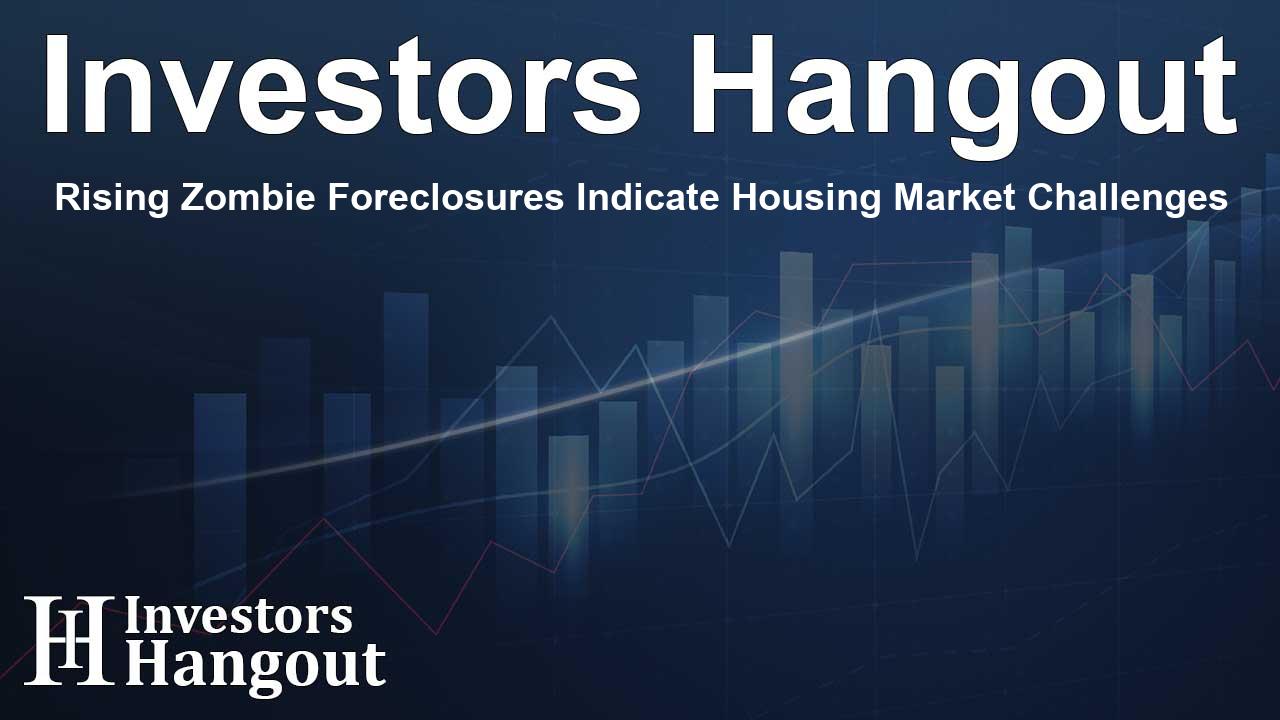Rising Zombie Foreclosures Indicate Housing Market Challenges

Vacancy Rates Maintain Stability Amid Foreclosure Concerns
The national home vacancy rate has persistently stood at 1.3 percent for fourteen consecutive quarters. Interestingly, the percentage of "zombie" foreclosure properties, which refers to homes abandoned by their owners, has ticked up to 3.38 percent.
Understanding the Latest Vacancy Report
A recent report analyzing residential property data reveals that approximately 1.4 million homes are currently vacant in the United States. This figure, representing around 1.3 percent of the total housing stock, indicates a stable vacancy rate over the past several years, correlating with a high-demand housing market.
This analysis, conducted by a leading property data curator, includes a comprehensive look at recorded real estate data, foreclosure status, as well as property ownership. The findings are crucial for assessing the current state of the housing market.
Pre-Foreclosure Homes Highlight Emerging Issues
According to the data, there are over 222,318 properties in the foreclosure process. Out of these, 3.38 percent, or about 7,519 homes, are classified as zombie properties. This marks a slight increase from the previous quarter's report, when 3.30 percent were abandoned. The growth in zombie homes is noteworthy as it may have implications for property values in surrounding neighborhoods.
Rob Barber, CEO of the data analysis firm, commented, "Vacant and zombie homes can negatively impact the value of nearby properties, potentially creating a ripple effect in local housing markets. Although the rise in zombie homes is marginal this quarter, it's crucial to monitor these trends closely."
The State of Zombie Foreclosures Across the Nation
In terms of state-level statistics, zombie foreclosures remain relatively low overall. However, some states have experienced increases in their zombie property counts. In 23 states, the number of zombie properties rose, though this was mainly by small numbers. Conversely, 23 states and the District of Columbia reported declines in their zombie home counts during the same quarter.
Among those with significant increases, Colorado saw a staggering 115 percent rise in the rate of zombie pre-foreclosures, an upward trend also present in states like Washington and Iowa.
Year-over-Year Trends in Zombie Properties
The comparison of year-over-year trends indicates that some states have made notable progress in reducing their zombie home counts. Georgia, for instance, reported a 25 percent decrease, while New Jersey and Illinois followed suit with reductions of 21 and 17 percent, respectively. These decreases reflect improvements in housing stability in these regions.
Vacancy Rates by Region and Property Ownership
The third-quarter data reveals critical distinctions in vacancy rates across various states. For example, Oklahoma reported the highest rate at 2.4 percent, indicating potential market weaknesses. Conversely, New Hampshire holds the lowest rate at 0.35 percent, suggesting a more robust housing demand.
Additionally, the report highlights that investor-owned properties are more frequently prone to become zombie homes. Nationwide, approximately 24.9 million properties are owned by investors, of which 3.6 percent are currently vacant. States like Indiana and Illinois report particularly high vacancy rates among investor-owned homes, raising concerns about ongoing market conditions.
Urban Areas and Their Zombie Foreclosure Rates
When analyzing large metropolitan areas, the report indicates a trend where more than half exhibit zombie foreclosure rates lower than the national average of 3.38 percent. However, cities such as Wichita and Peoria demonstrate alarming levels of zombie homes, necessitating scrutiny and intervention strategies.
Conclusion: Implications for Homebuyers and Investors
The overall landscape of zombie foreclosures and vacant properties reflects ongoing challenges within the housing market. Understanding these trends is essential for prospective homebuyers and investors as they navigate the current environment. Monitoring these statistics will provide insights into the resilience of specific markets and inform future decisions.
Frequently Asked Questions
What are zombie foreclosures?
Zombie foreclosures refer to homes that have been abandoned by their owners and are in the process of foreclosure.
Why is the vacancy rate important?
The vacancy rate is crucial because it indicates housing availability and stability within a market. High vacancy rates can negatively affect property values.
How do zombie homes impact neighborhoods?
Zombie homes can lead to declines in nearby property values and contribute to negative socioeconomic conditions in affected neighborhoods.
What states have the highest zombie foreclosure rates?
States such as Colorado and Washington have recently experienced significant increases in the rates of zombie properties.
What should investors be aware of regarding zombie properties?
Investors should pay attention to the potential risks associated with purchasing properties in areas with high rates of zombie foreclosures, as these can signify underlying market issues.
About The Author
Contact Lucas Young privately here. Or send an email with ATTN: Lucas Young as the subject to contact@investorshangout.com.
About Investors Hangout
Investors Hangout is a leading online stock forum for financial discussion and learning, offering a wide range of free tools and resources. It draws in traders of all levels, who exchange market knowledge, investigate trading tactics, and keep an eye on industry developments in real time. Featuring financial articles, stock message boards, quotes, charts, company profiles, and live news updates. Through cooperative learning and a wealth of informational resources, it helps users from novices creating their first portfolios to experts honing their techniques. Join Investors Hangout today: https://investorshangout.com/
The content of this article is based on factual, publicly available information and does not represent legal, financial, or investment advice. Investors Hangout does not offer financial advice, and the author is not a licensed financial advisor. Consult a qualified advisor before making any financial or investment decisions based on this article. This article should not be considered advice to purchase, sell, or hold any securities or other investments. If any of the material provided here is inaccurate, please contact us for corrections.
